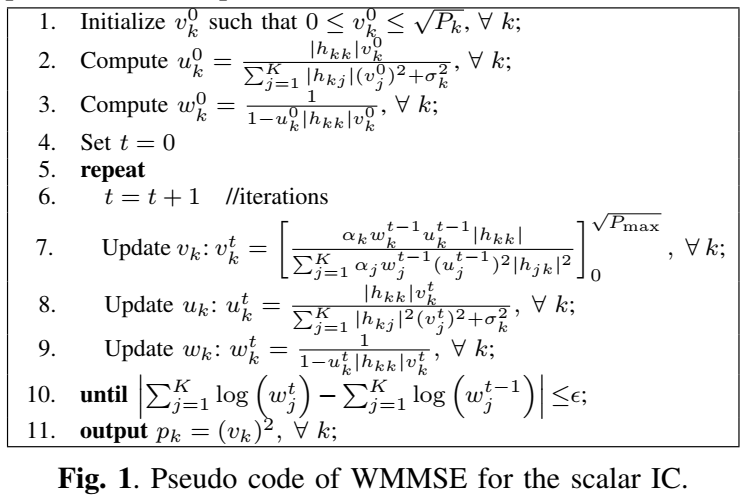Abstract: In recent decades, numerical optimization plays an important central role in addressing issues such as power control and beamformer design, radio resource management issues. However, traditional optimization algorithms usually require a considerable amount of iterations to converge, which presents a challenge for real-time processing. This paper presents a new depth of learning based radio resource management approach. The main idea is to input and output resource allocation algorithm considered unknown nonlinear mapping, and use DNN approximate it . If you can learn nonlinear mapping by DNN medium-sized accurately and effectively, then this DNN almost real-time resource allocation, because by DNN pass input requires only a few simple operations. ,
introduction:
For decades, radio resource management deal with various aspects of the problem have achieved great success in their handling of the optimization algorithm, but the nature of these optimization algorithms belong to the class of iterative algorithm. It is about a given set of real-time network parameters (e.g., SNR requirement and channel realization) as an input, multiple iterations, outputs "optimization" resource allocation policy. Therefore, these algorithms exist biggest challenge is the high cost of real-time computing.
This paper presents a machine learning method for radio resource management, the key idea is to optimize the resources of a given algorithm as a "black box" and try to learn its input / output relationships through DNN.
DNN key advantage with respect to the classical iterative algorithm is calculated in real time with a high rate DNN: DNN operating phase not involved in numerical optimization, involving only a few simple operations, such as vector multiplication, addition, and simple non-linear transformation.
The main contribution:
1) scheme is proposed based on the depth of learning, the machine learning bridge scheme and the radio resource allocation these seemingly unrelated art (in particular interference power network control).
2) through extensive theoretical analysis and numerical experiments demonstrate the feasibility of the proposed scheme. Preliminary results indicate that: DNN has great potential in the real-time management of radio resources; DNN can be approximated as an instrument iterative optimization algorithm.
WMMSE:
The weighted sum rate maximization problem is equivalent to the weighted MSE minimization problem:

Multiple access interference channel (IMAC) may be regarded as a special site co-channel receiver IC.

Depth learning method:
DNN end to end manner similar WMMSE, this article will WMMSE regarded as an unknown nonlinear mapping, and training DNN to learn its input / output relationships. Motivation: DNN use in the testing stage computationally efficient design fast real-time resource management programs.
WMMSE Each iteration represents a continuous mapping.
Two different channel models:
IC Gaussian channel: generating a channel coefficient for each of the standard normal distribution, i.e., having zero mean and unit variance distribution of Rayleigh fading.
IMAC channel: IMAC paper, a multi-cell model having N cells and K users. The distance between the centers of adjacent cells is set to 200 m. In each cell, a BS is placed in the center of the cell, the user with a random evenly distributed; network configuration shown in FIG:

(This is the document " Base transceiver Station Activation and Linear Optimal Design for Resource Management in Heterogeneous Networks " in FIG. )
Assuming that these cells have the same number of users, in accordance with zero mean and variance  fading distribution randomly generated user channel between each BS and each Rayleigh, wherein d represents the distance between the BS and the user, and L represents the number of having zero mean and variance shadow fading after 64 lognormal distribution.
fading distribution randomly generated user channel between each BS and each Rayleigh, wherein d represents the distance between the BS and the user, and L represents the number of having zero mean and variance shadow fading after 64 lognormal distribution.